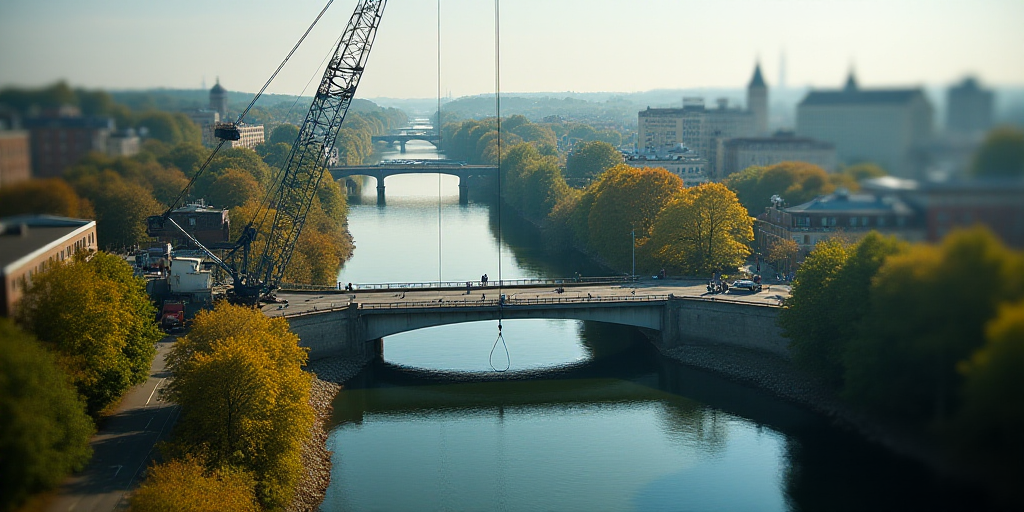Introduction and Background
The Puente Vehicular Nichupté, a 77.8% completed infrastructure project in Quintana Roo, Mexico, is one of the most ambitious and sustainable projects in the country. Led by the Secretaría de Infraestructura, Comunicaciones y Transportes (SICT) under the leadership of Jesús Antonio Esteva Medina, this project harmoniously blends urban development with environmental conservation in the Cancún region.
Project Details
Spanning 8.8 kilometers across the Nichupté Lagoon system, this strategic project includes two access points from the Boulevard Luis Donaldo Colosio and the Boulevard Kukulkán. It also features intelligent transportation systems (ITS), energy-efficient lighting, and a bicycle lane in a 14.9-meter transverse section accommodating three lanes: one each way and a reversible lane adjustable to traffic demand.
Environmental Commitment
Beyond its functional design, the Puente Vehicular Nichupté stands out for its environmental commitment. The SICT has initiated the largest ecological restoration program in its history, which includes reforestation of 306 hectares of mangroves. The direct impact on the ecosystem will be less than four hectares, demonstrating that large-scale infrastructure development can coexist with ecological richness.
Social Benefits and Economic Development
This project will directly benefit over 1.3 million residents from the municipalities of Benito Juárez, Puerto Morelos, Solidaridad, Isla Mujeres, and Lázaro Cárdenas, as well as the 20 million annual tourists visiting the region. By reducing travel times by 45 minutes, the bridge aims to enhance efficient and secure mobility, especially during environmental emergencies like huracanes or storms common in the Mexican Caribbean.
The project is estimated to generate over 51,000 jobs during its development, bolstering the local economy and solidifying Cancún’s status as a world-class tourism destination with resilient and environmentally responsible infrastructure.
Nichupté: A Living Ecosystem to Protect
Located in a mangrove area recognized as an Area of Protection for Flora and Fauna and designated as a “Ramsar Site,” the Nichupté Lagoon system is one of Mexico’s most valuable ecosystems. Mangroves act as natural barriers against hurricanes, control flooding, purify water, and harbor vast biodiversity, playing a crucial role in the region’s ecological balance.
As Mexico ranks fourth globally in mangrove coverage, and Quintana Roo has significant mangrove coverage, projects like the Puente Vehicular Nichupté must be viewed not just as connectivity initiatives but also as examples of harmonious infrastructure with nature.
To ensure proper operation and maintenance, the bridge’s conservation will be managed by the federal government, ensuring necessary resources and technical supervision to preserve this emblematic project designed with a clear ecological vocation.
Key Questions and Answers
- What is the Puente Vehicular Nichupté? It’s a 77.8% completed bridge project in Cancún, Quintana Roo, designed to balance urban development with environmental conservation.
- Who is leading the project? The Secretaría de Infraestructura, Comunicaciones y Transportes (SICT) under Jesús Antonio Esteva Medina’s leadership.
- What are the project’s environmental commitments? The SICT has initiated a large-scale ecological restoration program, including mangrove reforestation, with minimal direct impact on the ecosystem.
- Who benefits from this project? Over 1.3 million residents and 20 million annual tourists from five municipalities in the Cancún region.
- What are the economic impacts? The project is expected to generate over 51,000 jobs and contribute to Cancún’s status as a world-class tourism destination with resilient infrastructure.
- Why is the Nichupté Lagoon system important? This ecosystem, recognized as a Ramsar Site, plays a vital role in the region’s ecological balance through natural barriers against hurricanes, flood control, water purification, and biodiversity support.






